The life aquatic
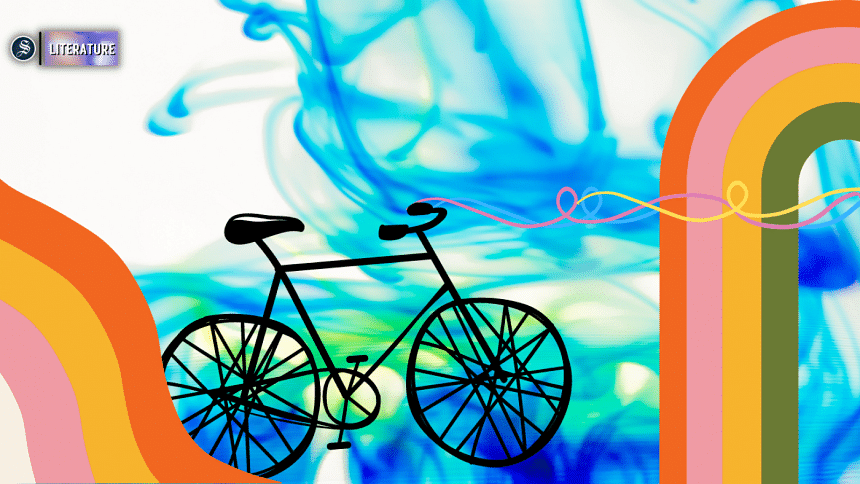
My next encounter with the 'achhoot' culture of high-caste Hindu families came when my father was transferred to Bhanga station in Faridpur district. Our house here was near the river—a bungalow with a tin roof. My father's office was attached to it. There was a large banyan tree in the front area of our house, which enclosed a large, wooded space. There was also a small temple to Kali.
`The second officer's house was close to ours. They were a Hindu family. His daughter's name was Manju and she was a little older than me. At that time my brother Jalal was just a baby, so one day Manju took him on her lap to visit her home and at one point, entered their kitchen. Her mother started shouting at her and began throwing pots and pans out of the kitchen as well as all the food they had prepared for the day. Manju had forgotten that Muslims were not allowed in Hindu kitchens. Everything had to be discarded, purified. It took the rest of the day to finish their meals. By then I had become used to it so this did not surprise me. I understood what was happening but not why.
In Bhanga I got better at riding bicycles. I would take a bicycle from the police station where my father was posted and ride it. These were large, heavy and unwieldy for a small young girl like myself, but I would ride mile after mile on them on the uneven mud roads. I would often be bruised in the process but that would not stop me from riding. I was in class six at the time.
Our financial situation, perpetually dire, had not improved in Bhanga. I had just one school dress, while other children had at least two. My mother would wash my dress and dry it every night and I would wear it in the morning. We wore white keds to school that were made of canvas. I would wash them and then just like all the other children chalk them to make them white.
I had only one nice dress I would always wear to social functions I attended with my parents. Other children, who were of wealthier families, noticed this. One day a girl said to me: 'I knew you would wear this dress today', a comment that hurt me deeply.
There was a weekly haat in Bhanga that took place by the river bank, by a great banyan tree. There was a great contrast between when the haat was beginning and when it would end. The atmosphere at the beginning was like a festival, and both the young and the old were excited. I would roam about the whole bazaar, which by noon would fill up with people and goods. By the evening few would remain apart from a stubborn seller or two desperate for sales. The flames of the lamps would dance in the wind coming over the river. But at one point even the most desperate sellers would leave. The remnants of their merchandise would remain scattered on the ground. Ropes, straw, paper and broken pottery. Looking at it all, I would feel sad.
It was at this haat that I saw a beggar eating chapati with coconut and sugar. I quickly returned home and asked my father's orderly to prepare a coconut by grating it and adding sugar to it just the way I had seen as there were many coconuts in our kitchen. I also requested the maid to make the rotis for me. Once my wishes were granted, I found that the combination did indeed taste great. I've continued to indulge in this simple pleasure over the years as have I in other peasant dishes, which I find are often more delicious than the complicated recipes full of expensive ingredients favoured by the rich. An example is firni (or kheer in Hindi), a classic Bengali dessert traditionally made with rice, milk, sugar, saffron and cardamom. When I was young, milk was often beyond the reach of the poor, so they made their firni with coconut milk and sugar instead, and rather than use expensive spices such as cardamom, they used bay leaf, and of course omitted the nuts and raisins. I find the peasant version of firni to be as good if not better than the traditional version. I also like to put in a pinch of salt, which is a secret to great desserts.
There was a river called Kumar near our house in Bhanga. A river of calm, small waves full of youth and life, The water was so clear that at places you could see all the way down to the bottom.
Boats would be anchored along Kumar, and one windy day I took one and paddled to the middle. The boat capsized but thankfully I was able to swim back while pulling the boat by the rope. When the boatmen saw me pulling it they helped me bring it to shore. Back then, I was like a river otter.
There were even bigger boats called Goyna Nouka and these were reserved for police officers such as my father. He had five assigned boatmen who would do other work around the household when they did not have sailing duties. The boat had a large room for the officer and his family and a smaller one for everyone else. It was meant for long journeys, and when taking long boat tours, the boatmen would anchor by the river every night and resume the journey the next day. These trips could last as long as a week, and my father would often return from them carrying sweets, vegetables and fruits from the places he had visited along the way.
There was a pukka bank by our house leading down to the water where I and other girls my age would bathe. When we saw the male folks moving around shamelessly, their wet lungis clinging to their genitals, we would whisper and laugh. These innocent jokes may have heralded my impending puberty for I was in Bhanga, about 11 or 12 years old when I found my pyjamas red with blood. I thought I was suffering from some terminal disease, but I did not know of an ailment where blood flew without injury. Not realising that my menses had come, I waded into the Kumar river with the hope that the blood would go away after some time. After a while I went home to don new pajamas but again I found blood in them. So again I went to the river and sat there a long time. I rose and found that it had not stopped. I dipped down again and waited. People passing by asked me what I was doing and I said I was taking a bath. I did this five times without success before I went home crying to my mother. I told her what was wrong with me and she brought me some clean old white clothes from which she made a pad and fixed it with a ribbon around my waistline. Then she then told me not to mix with malefolk. She explained nothing else. Nor was I curious to know.
Shoals of fish would move along Kumar, visible through the clear water. If you pulled up the hyacinths floating on the river's surface, you would see big prawns clinging to its roots. If you were quick enough you could catch them before they fell back in the water. They would have yellow roe on their uncovered bellies. Prawns were so numerous in those days that you could see from above a great dark green bed of them at the bottom of the river. The best way to catch them was using a triangle net called an ocha. One needed to only plunge the ocha into the water once to catch enough fish for a family, for those were the days of abundance.
Being an avid fisher was another reason for me to love the river. One day, when my mother informed the family that there was no fish at home to eat I took my rod and bamboo dula and headed for the river and in no time caught a number of bele fish, so many that there was no more room in my doula. They were fat and of a pinkish hue, with gills that made them look monstrous when flared. I returned with the creatures and my mother was happy.
I was an otter. I was an amphibian. Even at night I would be in the pond or the river. When I bathed in the latter I would sometimes swim to the middle and dive down. Straining against the great weight of the water above me, I did not stop until I reached the riverbed, where I would sit down and look up. If it was a bright day I could look up and see the great shafts of light piercing all the way to the bottom, spotlighting the swimming fish, the bedrock, the plants swaying around me. I could stay there a long time as my lungs had a tremendous capacity at that age. When I felt short of air I would swim up, cutting it so close that my lungs felt as though they would explode, seeing stars before my eyes before bursting through to the surface, where I would gratefully gulp air.
When it flooded in Bhanga ankle-length water would cover the fields. Once when a cousin of mine was visiting we went out for some night-time fishing. We took a hurricane lamp, a basket and two daos (curved machetes) with us. The lamp was intended to both light our way and to freeze the fish by shining it on them, at which point we would strike at them with the heavy daos to stun or kill them. A brutal yet thrilling sport. The second night we took an electric torch instead of the lamp and this proved even more effective as we caught many more fish.
Gas was only affordable to the rich back then. Villagers would rely on firewood and other dry plant matter to fuel their hearths. Patkhari, an unskinned jute plant, was one such material. It could also be used to reinforce earthen homes. My grandmother had a small supplemental kitchen in our ancestral home that was made of patkhari. Dhaincha served a similar purpose. It has a hard stalk and is a beautiful green colour when immature. But it smells unpleasant. I've also heard that it can be planted in barren lands to make them fertile again. Both were found in abundance in the villages, and even now they form the bulk of fuel for most village homes. Unlike jute, dhaincha's skin had no special value. You could cut a dhaincha plant so that it resembled a large cane. I would take one of these dhaincha canes and stalk the river banks. Whenever I saw a fish near the surface I would hit it with the cane with a swift whipping motion to kill it, deriving sadistic pleasure from seeing the fish die and float on their back. This was an example of the mindless cruelty that children embody during childhood. Since I did these things away from the eyes of my parents, there was no one to tell me 'no'.
I would cross the river on a ferry boat every day to get to my school, which was on the other side. But another reason I loved crossing the river was because the sweet shops were all on the other side. On the way back from school, before I would board the boat back home, I would stop at the shops to eat sweets. I rarely carried enough money so the shopkeepers kept a tab open for me, the accounts of which would be forwarded to my father at the end of the month for payment. From what I remembered the amount was between 25 to 35 taka a month. An enormous amount for a small child.
The sweets I had as a child were bigger, purer and more delicious than what we get now. One was called Lady Kennee after the wife of a British dignitary. It was shaped like a pillow, red on the outside and creamy white on the inside. There were also large Rajbhogs with cardamom powder at the centre. They were so big that it was hard to finish even one of them by myself.
Another source of sweets were from the goalas who would visit our house to make these confections from scratch from the purest, freshest milk from their cows. They would dig out clay from our yard to make a crude earthen hearth on which they boiled milk on large, square metal pans. The sweets made from this milk were far better than anything one could buy at the shops. This spoiled me for later in life as I could no longer abide by the sweets from the shops.
My parents had never taught me proper dental hygiene; combined with my sweets consumption this meant that my teeth were considerably decayed at a young age, so my parents took me to a dentist in the city. But I had a dreadful fear of needles, and each time the dentist revealed a syringe to inject my gums with an anaesthetic, I ran away crying. At least three or four syringes were wasted on me before, in a moment of unexpected tenderness, my father said, "It's alright. My daughter is frightened." Maybe my father could empathise because he had a similar fear of needles.
My mother and I would sit on the back porch in Bhanga and observe the darkness. In the villages there was barely a dusk before it was pitch black and we had to light kerosene lanterns. We would sit there in fear of what was behind the house: a large field dotted with palm trees which at night became crowded with howling jackals. But even in the day it was a desolate and wild place with an eerie cast. We were close enough to the field that on quiet days we could hear the palm fruit fall to the ground from their great heights with a loud thud. At the sound, provided it were day, my mother and I would run to the field to quickly collect the fruit and run back before we were hit as well, as palm fruit was heavy enough to seriously injure us. We would end up with a huge stack of them on the earthen floor of our kitchen. If you didn't eat them quickly enough they would begin to grow roots. We never ate the actual fruit, but rather the kernel of the seed, which was delicious.
In winter the circus would come to Bhanga, bringing elephants, tigers and women who performed feats of balance and stunts on bicycles, unicycles and on ropes. They would hop from one rope to another and bend their bodies into astonishing shapes. I remember vividly an elderly woman who would hop on a large ball and roll around on the grounds while standing on it.
The circus would run through the night for a whole month. I would be in bed early as I was a child, but the sounds of the circus would seep through my window: the reedy notes of harmonium being played would pierce the distance between me and the tents. I would wake then and listen, step out of the house barefoot and follow the music all the way to the tents, my feet, my shins slicing through the thin winter mist on the ground, growing numb from the cold. I would be shivering as I traversed empty fields walking along the narrow embankments between rice paddies, going through dark woods. I would sit with the crowd on the field and watch the acrobats while my parents slept on at home, oblivious. I would be one of the masses then, not the privileged daughter of a police inspector. The nagordola would always be in the middle of the field, a colourful blur as it swung counterclockwise, carrying the riders thirty, forty feet in the air as they squealed and screamed with delight. I would always get a funny feeling in my stomach riding it.
Eventually the circus would leave, and the children touched by its magic would be left contorting our bodies in the manner we had seen the circus performers do. I achieved a modicum of success through slavish practice. I could place a handkerchief between my feet and pick it up with my mouth while bending backwards with my hands folded on my chest.
Sultana Nahar is an author, lawyer, and former columnist at The Daily Star.

 For all latest news, follow The Daily Star's Google News channel.
For all latest news, follow The Daily Star's Google News channel. 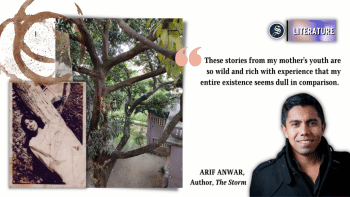
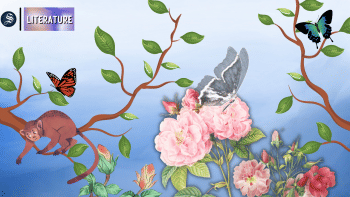





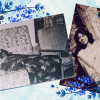

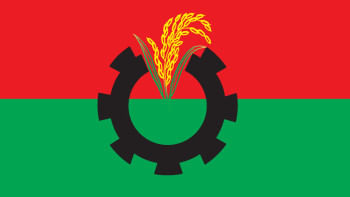
Comments